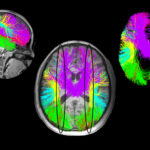A big step toward curbing graft-vs.-host disease after bone marrow transplant

A drug used for rheumatoid arthritis has moved a step closer to FDA approval for a desperately needed new use. The drug, abatacept, has gained FDA Breakthrough Therapy Designation for preventing acute, severe graft-versus-host disease (GVHD) in patients receiving bone marrow transplants. That could help fast-track the drug to the clinic.
“If we are lucky and we get FDA approval, this will be the first agent approved for preventing acute GVHD,” says Leslie Kean, MD, PhD, who directs Pediatric Stem Cell Transplant at Dana-Farber/Boston Children’s Cancer and Blood Disorders Center. “It could make bone marrow transplant safer for many more people, especially people who don’t have fully matched donors.”
The threat of GVHD
Bone marrow transplant (also called hematopoietic stem cell transplant) offers a cure for cancers such as leukemia and lymphoma, blood disorders like sickle-cell disease, genetic immunodeficiencies, and even some metabolic diseases. The transplant process replaces a person’s diseased bone marrow with healthy marrow from a donor. The new marrow goes on to build a healthy blood system.

For some patients, a stem cell transplant is the only treatment choice that remains. But donors must be matched by HLA typing, and often, a fully matched donor can’t be found. That puts patients at risk for GVHD: The donor T-cells see the patient’s healthy cells as foreign and start attacking patient’s tissues and organs. GVHD can strike even when the match is almost complete, with just one HLA mismatch. And as many as half of patients with severe GVHD ultimately die from it.
“One of the great tragedies is when a bone marrow transplant succeeds in curing a patient’s leukemia, but the patient dies from complications of the transplant,” says Kean. “The work we are doing with abatacept and similar clinical trials is designed to prevent these deaths.”
Phase II results with abatacept
Kean has led the preclinical work as well as the phase I and phase II clinical trials of abatacept, which goes under the brand name ORENCIA®. The Phase II trial, enrolling 180 patients receiving stem cell transplants for advanced leukemia and lymphoma, opened in 2013 while Kean was at Emory University. It has continued during her tenure at Seattle Children’s/University of Washington and since her arrival at Dana-Farber/Boston Children’s in 2018.
If we are lucky and we get FDA approval, this will be the first agent approved for preventing acute GVHD.
Of the 180 patients, 43 were at high risk for severe acute GVHD, having unrelated donors matched for only 7 of 8 HLA alleles. In preliminary results presented in 2017 and 2018, abatacept dramatically reduced severe acute GVHD when added to standard preventive regimens. Of the HLA-mismatched recipients treated with abatacept, only 3 percent had grade III to IV acute GVHD 100 days after the transplant. That compares with 22 to 32 percent of those given one of two standard regimens. Overall one-year survival was 85 percent with abatacept, versus 57 and 68 percent in the two control groups.
Preventing GVHD, without more relapses or infections
Abatacept works by suppressing the activation of certain T cells known as effector T cells. While suppressing these cells can curb attacks on the body from donor T cells, it also poses concerns that the drug might lead to uncontrolled infections or trigger relapse in patients with cancer. T cells protect against both.
“We found no increase in relapse among these patients, which was a really exciting and unexpected finding,” says Kean. “We also followed patients closely for infections, but we didn’t see any increase in these either. That’s the sweet spot we had hoped for.”
Kean and colleagues also investigated which molecular pathways are dysregulated in the T cells causing GVHD, using gene expression studies. Their findings, to be presented at the 2019 American Society of Hematology meeting this week, shed further light on which patients are most at risk for GVHD and how abatacept curbs it.
Making abatacept available to all
Based on the results reported to date, institutions around the country are starting to provide abatacept to transplant patients. But not all patients can access it.
“Without FDA approval for this indication, it’s much harder for patients to get insurance approval, and that affects the poorest patients the most,” says Kean. “For me, it’s a matter of social justice. We want to make it as easy as possible for anyone to access the drug for acute GVHD prevention.”
Kean has received research funding from Bristol Myers Squibb, the drug’s maker, and has been a consultant to the company.
Read more on stem cell transplant.
Related Posts :
-

Parsing the promise of inosine for neurogenic bladder
Spinal cord damage — whether from traumatic injury or conditions such as spina bifida — can have a profound impact on bladder ...
-

Unveiling the hidden impact of moyamoya disease: Brain injury without symptoms
Moyamoya disease — a rare, progressive condition that narrows the brain’s blood vessels — leads to an increased risk of stroke ...
-

Tough cookie: Steroid therapy helps Alessandra thrive with Diamond-Blackfan anemia
Two-year-old Alessandra is many things. She’s sweet, happy, curious, and, according to her parents, Ralph and Irma, a budding ...
-

A new druggable cancer target: RNA-binding proteins on the cell surface
In 2021, research led by Ryan Flynn, MD, PhD, and his mentor, Nobel laureate Carolyn Bertozzi, PhD, opened a new chapter ...





